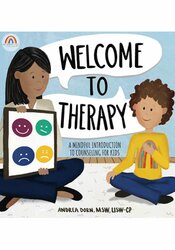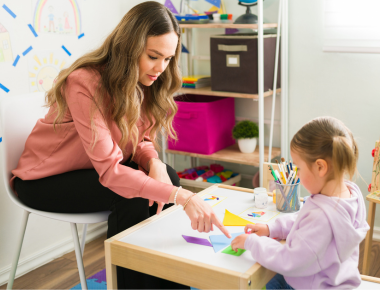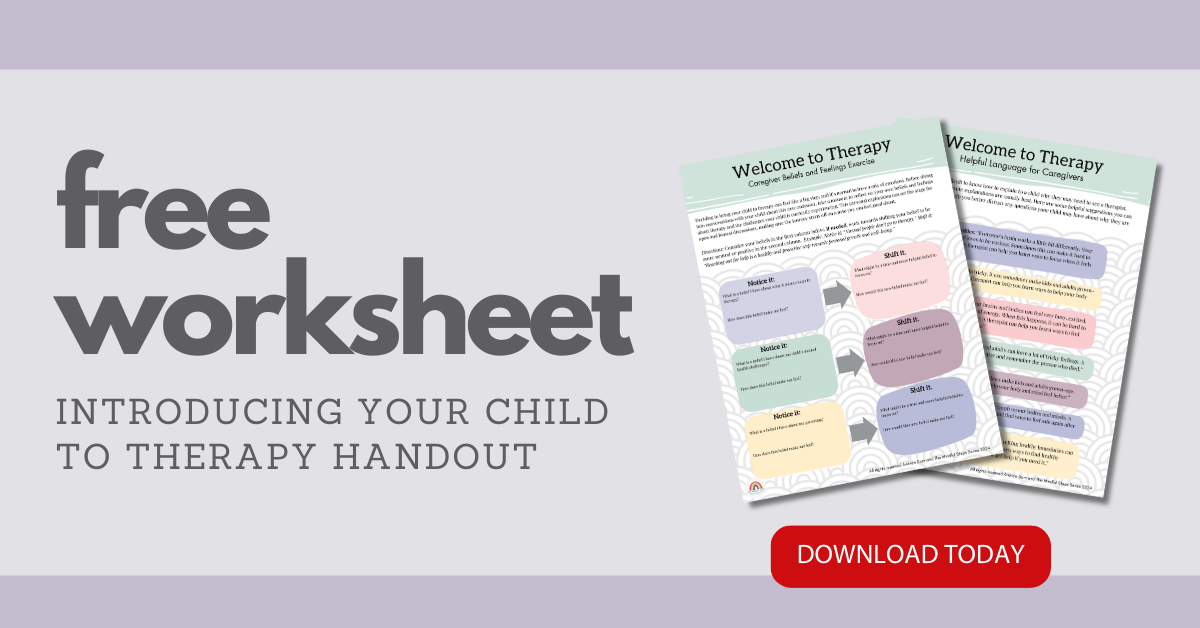Navigating the Path to Therapy: 5 Tips for Parents to Discuss Therapy with Their Child

Making the decision to bring your child to therapy is an important choice that involves both sensitivity and open communication. Thoughtful consideration to how you introduce a new idea (like going to therapy) can create a powerful way to strengthen or build healthy connection with your child. Here are five helpful things for parents to consider when introducing the concept of therapy with their child:
Helping children understand what to expect is an important way to maintain a sense of security and felt-safety when doing something new. By approaching the topic with sensitivity and openness, you lay the foundation for a positive and beneficial therapeutic journey for your whole family.
1. Reflect on Your Own Feelings about Therapy
Before broaching the subject with your child, take a moment to reflect on your own feelings about therapy and your feelings about your child’s mental health challenges. Sometimes, societal stigmas or personal biases can inadvertently affect how we communicate about mental health. It’s important to approach the conversation with an open mind and a positive attitude, demonstrating that seeking help is a healthy and normal part of life. (Check out the accompanying handout to explore your own beliefs about therapy and your child’s mental health challenges to help get you started.)2. Assess Your Child’s Knowledge about Therapy
Gauge your child’s understanding of therapy by gently exploring what they already know. Ask open-ended questions to understand if they've encountered this concept before, either through school, friends, or media. Older children and teens likely already know what therapy or a therapist is; however, there may be some confusion about what therapy is for or how it works. Understanding your child’s existing knowledge will help you tailor your discussion to address any misconceptions or fears they may have.3. Introduce and Discuss Therapy in an Age-Appropriate Way
When beginning a conversation about therapy, choose a calm and neutral setting. Consider the age and temperament of your child to choose an appropriate time and place for your discussion. Frame therapy as a positive and supportive space where kids (and even adults!) can share their thoughts and feelings with a grown-up. Emphasize that therapy is a tool for growth and self-discovery during tricky times. For young children, simple and concrete terms are usually most effective, and books can be a helpful way to communicate in a way that is engaging and easy to understand. (Check out my book Welcome to Therapy for helpful language in explaining what therapy is all about!)4. Ask If Your Child Has Any Questions
Encourage an open dialogue by inviting your child to ask questions. This empowers them to express any concerns or curiosities they may have. Be prepared to provide honest, age-appropriate answers. Reassure them that their feelings and questions are valid, creating an environment of trust and understanding. Additionally, don’t worry if your child doesn’t have any questions. Younger children especially may not have any or may need some time to process this new information.5. Follow Up Before and After the First Session
Before the first therapy session, consider briefly checking in with your child to see if they have any lingering questions or concerns. After the session, take the time for another quick check-in. Afterward, keep the line of communication open by checking in every once in a while regarding how therapy is going. It is possible to overdo checking in, so keep it brief and follow your child’s lead. This ongoing communication reinforces that their feelings and thoughts are important, fostering a sense of support and connection.Helping children understand what to expect is an important way to maintain a sense of security and felt-safety when doing something new. By approaching the topic with sensitivity and openness, you lay the foundation for a positive and beneficial therapeutic journey for your whole family.
How do I teach my child that it’s safe to share their feelings with a trusted adult?

Starting therapy can be a challenging and confusing experience, especially for children. They often don’t know what to expect, who a therapist is, or how therapy can help. Whether they’re going to therapy to navigate grief, sadness, anxiety, trauma, or other tricky situations, it’s important that children understand the ins and outs of therapy to start off on the right foot.
Written and illustrated by therapist (and mother) Andrea Dorn, MSW, LISW-CP, Welcome to Therapy walks children through the process of starting therapy and normalizes the experience in simple, concrete, and developmentally appropriate terms – allowing kids to better understand what to expect and what is expected of them.
Written and illustrated by therapist (and mother) Andrea Dorn, MSW, LISW-CP, Welcome to Therapy walks children through the process of starting therapy and normalizes the experience in simple, concrete, and developmentally appropriate terms – allowing kids to better understand what to expect and what is expected of them.
Meet the Expert:
Andrea Dorn, MSW, LISW-CP, is a mom and licensed clinical social worker who works as a psychotherapist with adults and children of all ages. The Mindful Steps series was created as a culmination of her interest and background in mindfulness as well as behavioral and attachment theories. Andrea is dedicated to helping young minds and their families navigate the big and small changes that come with child development by encouraging mindfulness and emotional connection.
Learn more about her educational products, including upcoming live seminars, by clicking here.
Learn more about her educational products, including upcoming live seminars, by clicking here.




